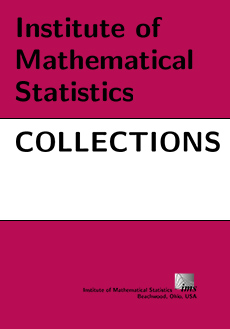Abstract
Morris L. (“Joe”) Eaton is one of the preeminent theoretical statisticians of the past 40 years, and his work has had a substantial impact on the way many statistical issues are currently viewed. His pioneering and fundamental research has spanned many areas with particular emphasis on multivariate statistics, decision theory, probability inequalities, invariance, and the foundations of Bayesian inference. Perhaps less well-known are his substantial contributions to many applied problems in clinical trials and other topics in biostatistics. This volume is dedicated to and in honor of him, from his collaborators, colleagues, friends and former students. Their contributions to this volume reflect his broad interests and cover topics on inference, Markov chain Monte Carlo, multivariate analysis, and corporate bond pricing models, among others.
Morris Eaton earned a Ph.D from Stanford University in 1966. He joined the faculty at the University of Chicago from 1966–1971. He then moved to the University of Minnesota in 1971, where he had a distinguished career until he became a professor emeritus in 2005. He has published four books and more than 80 articles, and supervised nine Ph.D dissertations. His scholarly achievements are well-recognized by the profession in that he is a Fellow of the Institute of Mathematical Statistics (IMS) and the American Statistical Association as well as an elected member of the International Statistical Institute.
Throughout his career Professor Eaton dedicated himself to professional service. Notably he served as President of the IMS in 1999–2000 as well as being a Council Member of the IMS on two separate occasions, and was on the Executive Committee of the Bernoulli Society. He was Co-Editor of The Annals of Statistics (2004–2006) and was Executive Editor of Statistical Science (2001).
On a more personal note, Joe has always been a wonderful colleague in the School of Statistics. He is passionate about research and is always encouraging to junior colleagues and students. He talks with everyone about the deep technical questions he loves. Also, he was a dedicated, enthusiastic, and incredibly well-organized teacher. He often taught the most basic introductory course for undergraduates, where he gained a reputation for setting the standard for teaching in the School of Statistics.
We give our appreciation and thanks to Aurore Delaigle who helped to make this volume exist. We are grateful to the referees who sacrificed their time to review the contributions in a timely manner. Finally, we thank the authors for contributing to a strong and stimulating volume; it is their work that gives meaning to this volume.


